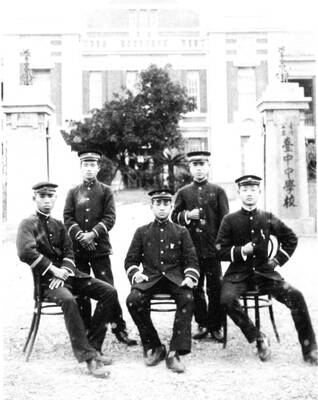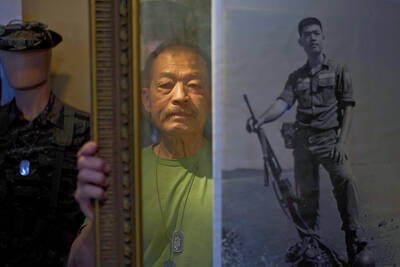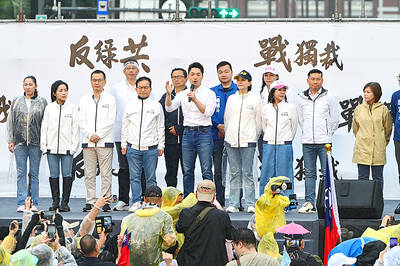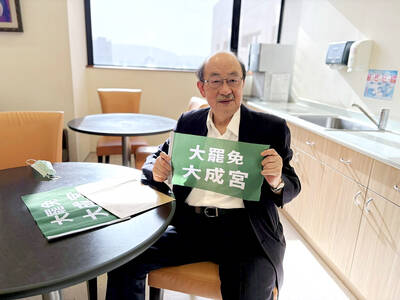July 3, a pig farmer throws acid on his girlfriend because she wanted to leave him, leaving her disfigured and partially blind; July 15, a 50-year-old man threatens his lover with a scythe that has a blade 70cm long and holds her captive for 8 hours; July 21, a man strangles his girlfriend after an argument and drives around for two days with her body in the trunk of a car; July 23, a jealous ex-boyfriend rear-ends his former lover on a motorcycle ...
These incidents all happened shortly after the media frenzy surrounding the three male-on-female murder-dismemberment cases that took place in May and June. Two of the perpetrators in these cases were in relationships with the victims, while the third was declined sex. The ensuing media reports and online discussions were largely sensational, preferring to focus on the grimy details and looking for scapegoats. There were few discussions of the larger gender issues behind the tragedies.
And despite the common underlying themes of male violence perpetrated against women and men having trouble handling rejection, the cases last month received little attention, a missed opportunity to explore the social causes behind these violent crimes.

Illustration: Constance Chou
“These cases are quite common in Taiwanese society, so unless someone dies, the media usually doesn’t see it as newsworthy,” National Taiwan University of Arts Radio and Television professor Weber Lai (賴祥蔚) says. “And because there were already several dismemberment cases, regular violence doesn’t really attract readers.”
MISSING THE POINT
Chen Shu-fen (陳淑芬), deputy director of the Modern Women’s Foundation (現代婦女基金會), which focuses on domestic and sexual violence, says reporters interviewed her about the underlying causes of these violent male behaviors during the dismemberment cases. Little of what she said, however, made it into the published reports.
“The causes behind these violent cases are quite complicated,” she says. “It might be too much for a mass audience to digest, so we’ll simplify it when we talk about it. Then the media simplifies it even more.”
Hsiao Pin (蕭蘋), who researches media and gender at National Sun Yat-sen University, points out that the mainstream media uses imprecise language in their reports. For example, many publications said in one of the dismemberment cases that the man was qiuhuan (求歡, asking for sex), even though it was clearly attempted rape.
“They don’t even assume responsibility for using the right words and perspectives in reporting the incidents, not to mention [investigating] the deeper issues behind the incidents,” she says.
Aside from childhood trauma, mental illness and substance abuse, Chen cites the prevalence of toxic masculinity as a major factor behind these domestic or sexual assault cases.
Toxic masculinity refers to traditional stereotypes of how men should behave that are harmful to themselves and others, including aggression, misogyny and emotional repression. While women have made strides in professional equality, many gender role stereotypes persist, she says.
“Many men still think that they can tell women what to do, that if they want a woman they just need to be persistent,” she says. “Men also have more pressure to succeed, they cannot cry and they just need to, for example, mimic the actions in television shows to get what they want without being empathetic toward the other person.”
While her organization has mostly focused on the female victims of violence, she thinks that more resources need to be devoted to helping men establish healthy attitudes towards relationships and gender.
Hsiao says as gender roles continue to evolve, society should examine how men can feel easily frustrated or dejected — both economically or emotionally.
“The media may tell the audience how to identify a ‘scary lover,’” she says. “But we need more discussion on what creates a scary lover. They’re not born that way. But while most people grow from emotional setbacks, why are some people unable to move on, finally leading to tragedy?”
Chen says that one problem has been that sex education has traditionally focused on the physical part and not the emotional aspects. While it’s improved slightly today, discussion on handling relationships and dealing with rejection is still lacking.
“This is not just a women’s issue,” she says.
Furthermore, students have access to counseling services in school, but once people become adults, they often no longer know where to turn in times of distress due to the stigma and lack of awareness toward mental health.
TABLOIDIZATION OF THE MEDIA
Hsiao says that Taiwan’s mainstream media has become increasingly sensationalized since the mid-2000s with the arrival of Apple Daily, which uses images of sex and gore, and the blatant objectification of women and other “easy” ways to attract readers.
“It seems that there’s no more room for more serious reporting,” she says. “They’ve created a demand among readers [for sensational news], which reduces the likelihood that the public will look at these issues from a broader and more in-depth level.”
Lai adds that if the media doesn’t provide the proper context and reports only on the abnormally horrific, copycat crimes can result.
Lai says that another reason why murder cases are widely reported is that it’s more difficult to interview a surviving victim of violence, while a dismemberment case has plenty of on-site evidence and other concrete elements to show.
Internet discussion is often brutal and unproductive. For example, the comments on the pig farmer acid attack on Professional Technology Temple (PTT), a popular academic bulletin board, consisted largely of name-calling, threats and unrelated trolling with hardly any productive conversation.
“Oftentimes the good guys will be afraid to speak up,” Chen says, recalling when her organization was attacked by netizens after stating that they support former sexual harassers who are willing to apologize and take responsibility. “They accused us of supporting sexual harassment. There’s a lot of unreasonable people out there. We have to be very careful what we say.”
Other problems cited by Hsiao and Chen include the blatant object-ification of women in the media, especially the “large-breasted women spotted selling beef noodles” news reports will impact how men treat women as the women are depicted as being happy to be objectified for their looks or body parts.
Chen is also concerned about idol dramas, which often depict male-female relationships in unhealthy or unrealistic ways — especially scenes where men can get the woman they want by simply being forceful and persistent, or where going to a bar almost always results in sex.
REGULATION AND EDUCATION
Hsiao says the National Communications Commission (NCC) should enact strong regulations, though this may be difficult because sensationalism sells.
Hsiao is quick to say that she doesn’t mean suppressing freedom of speech, but facilitate more discussion with civilians, non-governmental organizations and academics to discuss how the media can improve its content.
Readers and viewers should also hold the media more accountable.
Although toxic masculinity remains a serious problem, there is an increasing awareness of the issue. For example, a “Men’s Talk” center (城男舊事心驛站) was set up by the Teacher Chang Foundation (張老師基金會) and the Taipei City Government in 2016. Among other services, the center provides small classes and workshops on relationships, including a series launched last week on handling breakups and divorces in response to the recent violent cases.
“It has become more popular than we expected,” Chen says. “This means that there is demand. The new generation seems to be more conscious about such issues, and many don’t think that men need to be ‘manly’ anymore, that they can cry when they want to. I do see some improvements.”

April 28 to May 4 During the Japanese colonial era, a city’s “first” high school typically served Japanese students, while Taiwanese attended the “second” high school. Only in Taichung was this reversed. That’s because when Taichung First High School opened its doors on May 1, 1915 to serve Taiwanese students who were previously barred from secondary education, it was the only high school in town. Former principal Hideo Azukisawa threatened to quit when the government in 1922 attempted to transfer the “first” designation to a new local high school for Japanese students, leading to this unusual situation. Prior to the Taichung First

When the South Vietnamese capital of Saigon fell to the North Vietnamese forces 50 years ago this week, it prompted a mass exodus of some 2 million people — hundreds of thousands fleeing perilously on small boats across open water to escape the communist regime. Many ultimately settled in Southern California’s Orange County in an area now known as “Little Saigon,” not far from Marine Corps Base Camp Pendleton, where the first refugees were airlifted upon reaching the US. The diaspora now also has significant populations in Virginia, Texas and Washington state, as well as in countries including France and Australia.

On April 17, Chinese Nationalist Party (KMT) Chairman Eric Chu (朱立倫) launched a bold campaign to revive and revitalize the KMT base by calling for an impromptu rally at the Taipei prosecutor’s offices to protest recent arrests of KMT recall campaigners over allegations of forgery and fraud involving signatures of dead voters. The protest had no time to apply for permits and was illegal, but that played into the sense of opposition grievance at alleged weaponization of the judiciary by the Democratic Progressive Party (DPP) to “annihilate” the opposition parties. Blamed for faltering recall campaigns and faced with a KMT chair

Article 2 of the Additional Articles of the Constitution of the Republic of China (中華民國憲法增修條文) stipulates that upon a vote of no confidence in the premier, the president can dissolve the legislature within 10 days. If the legislature is dissolved, a new legislative election must be held within 60 days, and the legislators’ terms will then be reckoned from that election. Two weeks ago Taipei Mayor Chiang Wan-an (蔣萬安) of the Chinese Nationalist Party (KMT) proposed that the legislature hold a vote of no confidence in the premier and dare the president to dissolve the legislature. The legislature is currently controlled